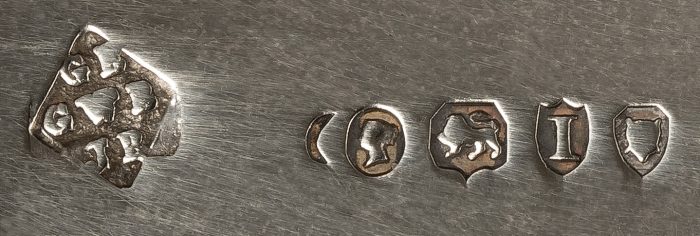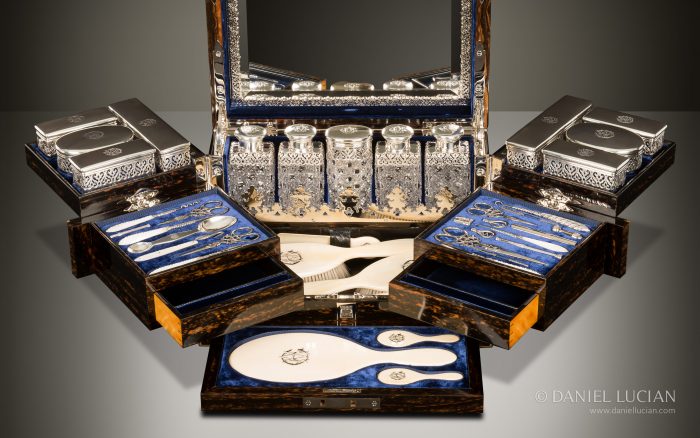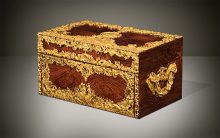Silver Hallmarks
Originally introduced in 1300 by a statute of Edward l, this is an official identifying mark or set of marks stamped into a precious metal. The purpose of these hallmarks has always been to protect the customer from fraud and to protect the seller against unfair competition.
English antique silver (pre-1890) should have either four or five separate marks stamped into it. These will be the marks of the maker/ silversmith, the Lion Passant to signify that its English Sterling Silver, the Assay Office Mark, the date letter, and finally the Monarch’s head showing that the duty had been paid (this mark was removed after 1890).

George Betjemann and Sons Silver Hallmark. The ‘GB’ refers to George Betjemann, the ‘GWB’ refers to George William Betjemann, and the ‘JB’ refers to John Betjemann. Looking at the date letter ‘I’ tells us that this silver dressing case jar lid dates to 1884.

 Price On Application
Price On Application